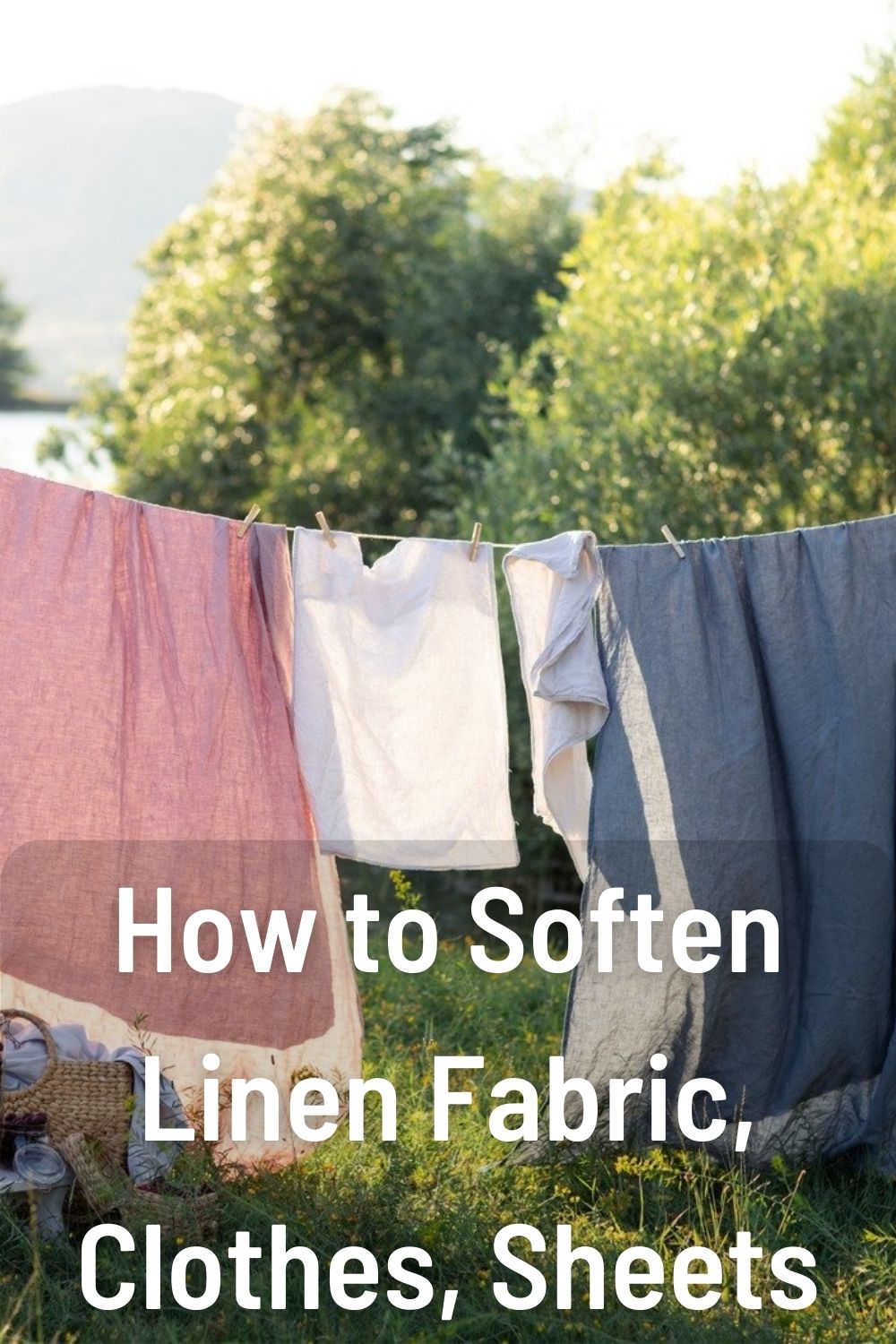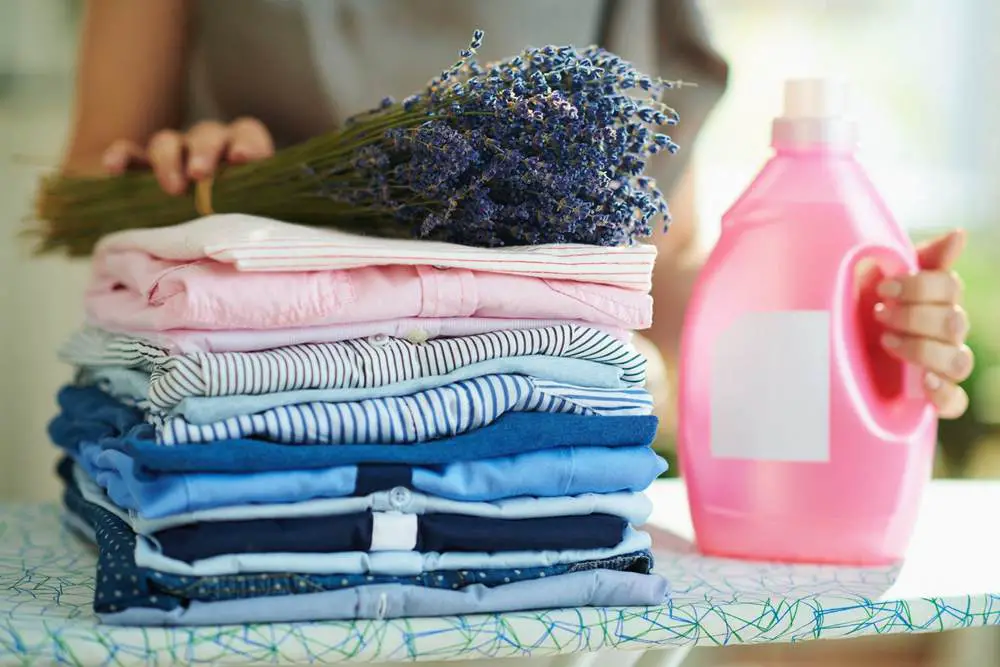
Linen is a natural fabric made from the fibers of the flax plant. It’s valued for its lightness, breathability, and elegant drape. However, new linen can be quite stiff and scratchy until it’s broken in.
The good news is there are several easy ways to soften and condition linen to make it more comfortable to wear and use. In this complete guide, we’ll cover everything you need to know about softening linen fabric, clothing, and bed sheets.
Table of Contents
Why Does Linen Get Stiff and Scratchy?
Linen’s signature crispness comes from the structure of the flax fibers used to make it. Flax fibers have a smooth, rigid outer layer that gives linen its stiff feel when new.
The fibers also lack elasticity, which is why linen resists stretching and easily wrinkles. Ironing helps shape the fabric, but it also causes the fibers to flatten and become stiffer.
Finally, the natural oils that help soften cotton and other fabrics are removed during linen production. This leaves linen textiles scratchy without additional conditioning.
Softening Techniques for Linen Fabric
If you sew with linen fabric, there are a couple of easy techniques you can use to soften it up before making it into finished garments or home décor.
Wash in Hot Water
Washing 100% linen fabric in hot water helps relax the fibers and make the material more pliable. Use a laundry detergent or soap designed for delicates and skip the fabric softener, as it can leave residue.
Wash linen in the hottest water recommended for the fabric type. Dry it completely in the dryer at a medium heat setting before sewing.
Steam Press
One of the best ways to soften stiff linen is by steaming it before sewing. Fill an iron with distilled water and use the steam setting to penetrate the fabric.
As you press the linen, the steam will cause the fibers to swell and relax. Work in sections and press each area for 5-10 seconds before moving on. Fold and repeat as needed until the fabric drapes easily.
Skip Sizing
Some linen fabrics are treated with sizing, a starch-like substance that provides body and sheen. Avoid fabrics with heavy sizing, as it makes linen stiffer. Opt for pre-washed linen whenever possible.
How to Soften Linen Clothes and Sheets

Once linen is made into finished garments, bedding, and other household textiles, you’ll need to launder it several times to maximize softness. Here are some tips:
Wash Frequently
Washing is the most important step to softening linen over time. The more you launder linen, the more the fibers will relax and lose their stiffness.
Wash new linen clothes or sheets at least 2-3 times before first use. Then continue washing them frequently with each wear or weekly for bed linens.
Use the warmest recommended water setting and a mild detergent. Skip fabric softener and liquid softeners that can leave residue.
Add White Vinegar
For extra softening power, add 1⁄2 to 1 cup of distilled white vinegar to the rinse cycle. The vinegar helps remove detergent residue and minerals that can stiffen fibers. It also acts as a natural fabric softener.
Use Fabric Softener Sheets
If you want a scent, dryer fabric softener sheets are a good option for softening laundry without leaving a coating. They are designed to transfer softeners to fabrics during the dryer cycle.
Air Dry
Line drying linen in the breeze naturally softens the fibers. The movement and evaporation help relax the fibers. For heavier linen items, clip them to a line rather than hanging them, so the weight can pull fibers loose rather than over-stretching them.
Use Dryer Balls
Wool or rubber dryer balls are an eco-friendly way to soften laundry without chemicals. As they bounce around the dryer, they help separate fibers and prevent stiffness. They also cut down on drying time.
Iron on Medium Heat
Ironing can help shape linen and prevent wrinkles, but too much heat can flatten fibers and cause scratchiness. Always use a medium heat setting and press rather than push the iron across the fabric.
Skip Starch
Starch sprays and solutions will make linen crisp again, but they undermine softness. Stick to starch alternatives like fabric finishers if you want to add body without stiffness.
How to Soften Secondhand or Vintage Linen
Pre-worn linen tends to be softer than brand new fabric. But if you inherit or thrift older linen that’s rough, try these steps to condition it:
Wash in Borax
Minerals in hard water can build up on fabric over time. For vintage linens, do a hot water soak with Borax to help remove deposits. Use 1⁄2 cup Borax per large load and let it soak before washing.
Use Baking Soda
Baking soda is mildly abrasive so it can scrub away residue that causes scratchiness. Add 1⁄2 cup baking soda to the wash cycle and launder as usual with a mild detergent.
Soak in Vinegar
Soaking linen in a solution of 1 part white vinegar to 3 parts water helps dissolve buildup and soften fibers. Mix it in a bucket or tub and soak linens for 1-2 hours before washing.
Use Laundry Detergent for Hard Water
Hard water detergents contain additives to prevent mineral buildup that can stiffen fabric over time. If the linen feels rough, switch to a specialty detergent designed for hard water areas.
Skip Harsh Bleach
While bleach can help disinfect vintage linens, it can also damage fibers and cause brittleness over time. Use oxygen bleach when possible, and avoid chlorine bleach unless absolutely needed.
Common Questions About Softening Linen
Here are answers to some frequently asked questions about getting linen soft:
Does linen soften with age?
Yes, linen will naturally soften the more it is laundered and used. The fibers relax over time, but frequent washing helps speed this process. Old linen is typically very soft.
How long does it take to break in linen?
It can take 5-10 washes to fully soften new linen items. Some sources recommend washing bed linens 20 times before use. In general, the more you launder linen, the faster it will soften.
Should you use fabric softener on linen?
Linen doesn’t require fabric softener, and many experts recommend avoiding it. The waxy residues can attract dirt and actually make linen less soft over time. Natural options like vinegar work well instead.
Does steam pressing damage linen?
No, steam is an effective way to soften linen fabric and finished textiles. Use a medium heat setting and avoid pressing any one area for too long. This relaxes fibers without scorching or damaging linen.
Can you put linen in the dryer?
Yes, linen can go in the dryer but medium heat is recommended. Tumble drying helps relax fibers. Just avoid over-drying, as high heat can damage linen over time. Line drying also naturally softens.
Get Supple Linen with Proper Care
With the right techniques, you can break in scratchy new linen and keep older items soft and supple. Washing and wearing linen frequently helps relax the fibers fastest for maximal comfort and drape. Avoid overly harsh treatments and linens should soften beautifully over time.